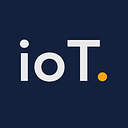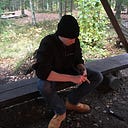YOLOv9 vs. YOLOv8: Segmentation & Fine-Tuning Guide
Comparison, demo, and training on your own dataset
The YOLOv9 model for object segmentation was released recently, offering superior performance to the previous YOLOv8 model. This article will compare YOLOv8 and YOLOv9, showcase YOLOv9 segmentation, and include a guide for fine-tuning YOLOv9 on your own datasets.
Comparison and Showcase
In this section, we will compare YOLOv8 and YOLOv9 performance and quickly showcase YOLOv9 segmentation.
YOLOv8 vs. YOLOv9
The new YOLO model uses techniques such as Programmable Gradient Information (PGI) and Generalized Efficient Layer Aggregation Network (GELAN) to improve performance [1]. YOLOv8 accuracy and efficiency:
Recently, two models using YOLOv9 for object segmentation were released, improving upon the performance of the previous generation:
In summary, YOLOv9 improves accuracy and efficiency for object segmentation.
Demo
YOLOv9e segmentation demo:
Training
It’s possible to train YOLOv9 on your own segmentation data. The process can be divided into three steps: (1) Installation, (2) Dataset Creation, and (3) Fine-tuning/Training.
Installation
Begin by installing the Ultralytics framework:
pip install ultralyticsDataset
Choose or create the dataset you need. The dataset needs to be in YOLO segmentation format, meaning each image shall have a corresponding text file (.txt) with the following content:
<class-index> <x1> <y1> <x2> <y2> ... <xn> <yn>
...
<class-index> <x1> <y1> <x2> <y2> ... <xn> <yn>Where each row is an object, class-index is an integer representing the class and xn, yn are the normalized screen coordinates of the segmentation points. Make sure to include background images, i.e., images without detected objects. Background images don’t need an accompanying annotation file.
After finding a dataset and completing the image annotations, organize the dataset in the following way:
path/to/dataset/
├─ train/
│ ├─ img_0000.jpg
│ ├─ img_0000.txt
│ ├─ ...
│ ├─ img_0999.jpg
│ ├─ img_0999.txt
├─ val/
│ ├─ img_1000.jpg
│ ├─ img_1000.txt
│ ├─ ...
│ ├─ img_1099.jpg
│ ├─ img_1099.txtFine-Tuning
This section is for you if you want to train YOLOv9 on your custom data. If you’re just looking to use the model, skip ahead to the section Inference and Segmentation.
First, begin by creating a training configuration file:
# train.yaml
path: path/to/dataset
train: train
val: val
names:
0: person
1: bicycle
2: car
# ...
77: teddy bear
78: hair drier
79: toothbrushThe configuration file shall contain the paths to the training and validation sets, class names, and class mapping.
Finally, train the model using the Ultralytics framework:
from ultralytics import YOLO
model = YOLO("yolov9c-seg.yaml")
model.train(data="path/to/train.yaml", epochs=100)Make sure to use the correct segmentation model depending on your time constraints and hardware:
- yolov9c-seg.yaml
- yolov9e-seg.yamlBest Practices
If you want to optimize the training performance, read this guide:
Inference and Segmentation
Run inference:
results = model("images/sofa.jpg")Plot segmented masks:
import numpy as np
import matplotlib.pyplot as plt
import cv2
for result in results:
height, width = result.orig_img.shape[:2]
background = np.ones((height, width, 3), dtype=np.uint8) * 255
masks = result.masks.xy
for mask in masks:
mask = mask.astype(int)
cv2.drawContours(background, [mask], -1, (0, 255, 0), thickness=cv2.FILLED)
plt.imshow(background)
plt.title('Segmented objects')
plt.axis('off')
plt.show()
plt.imsave('segmented_objects.jpg', background)Plot segmentation mask with original colors:
import cv2
import numpy as np
import matplotlib.pyplot as plt
for result in results:
height, width = result.orig_img.shape[:2]
background = np.ones((height, width, 3), dtype=np.uint8) * 255
masks = result.masks.xy
orig_img = result.orig_img
for mask in masks:
mask = mask.astype(int)
mask_img = np.zeros_like(orig_img)
cv2.fillPoly(mask_img, [mask], (255, 255, 255))
masked_object = cv2.bitwise_and(orig_img, mask_img)
background[mask_img == 255] = masked_object[mask_img == 255]
background_rgb = cv2.cvtColor(background, cv2.COLOR_BGR2RGB)
plt.imshow(background_rgb)
plt.title('Segmented objects')
plt.axis('off')
plt.show()
cv2.imwrite('segmented_objects.jpg', background)Further Reading
If you want to learn more about programming and, specifically, machine learning, see the following Coursera course:
Note: If you use my links to order, I’ll get a small kickback.

